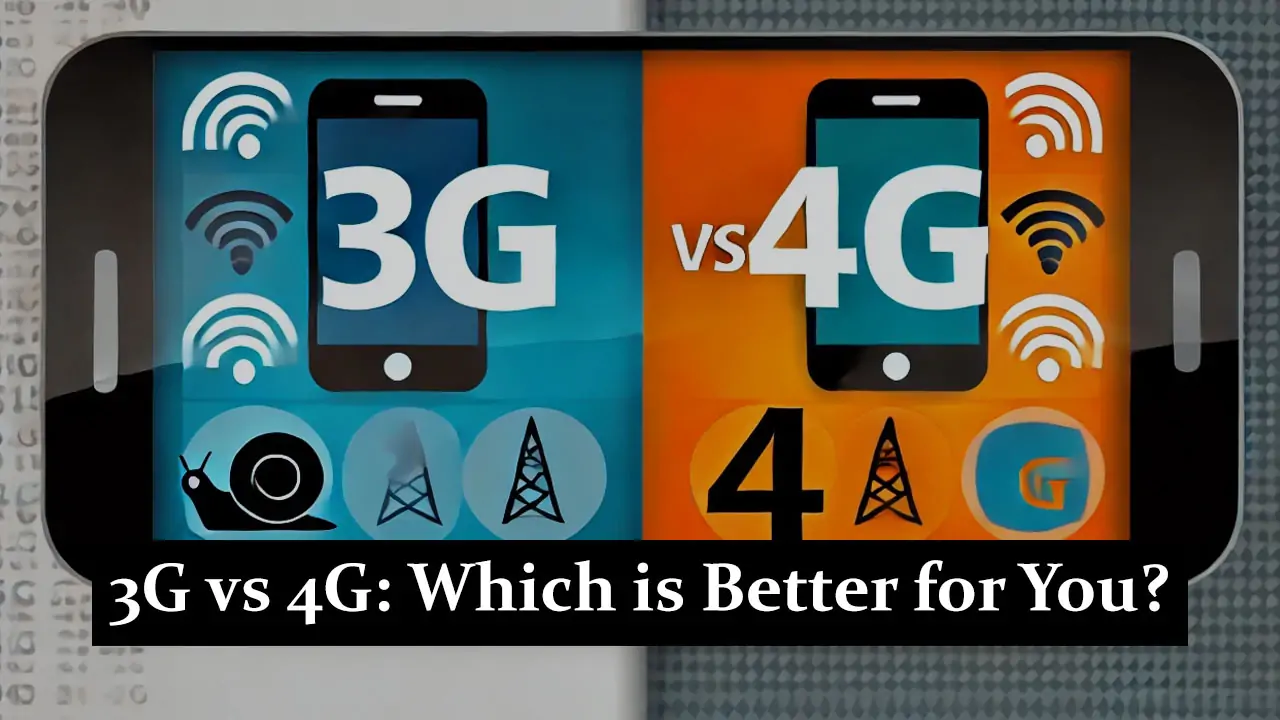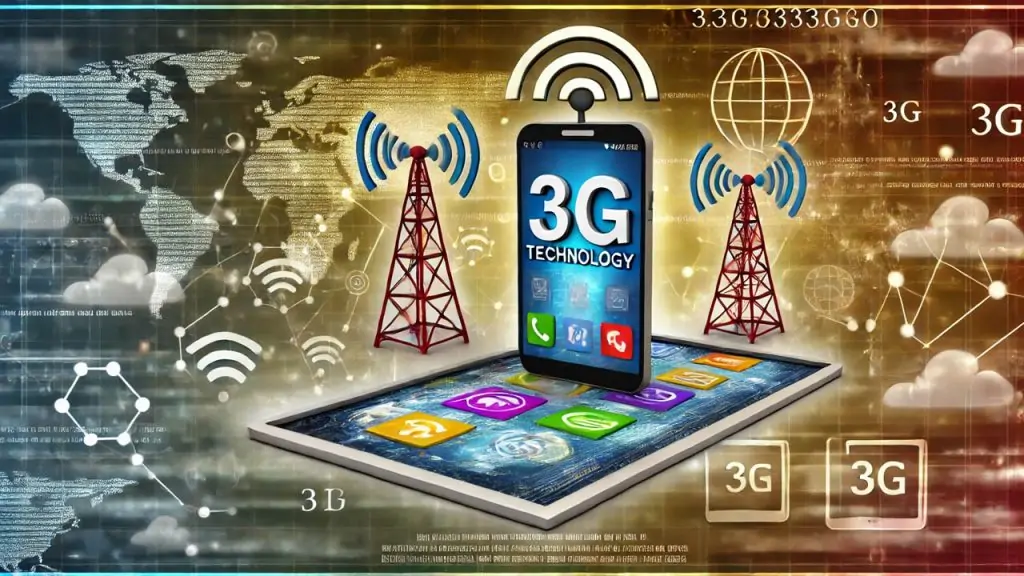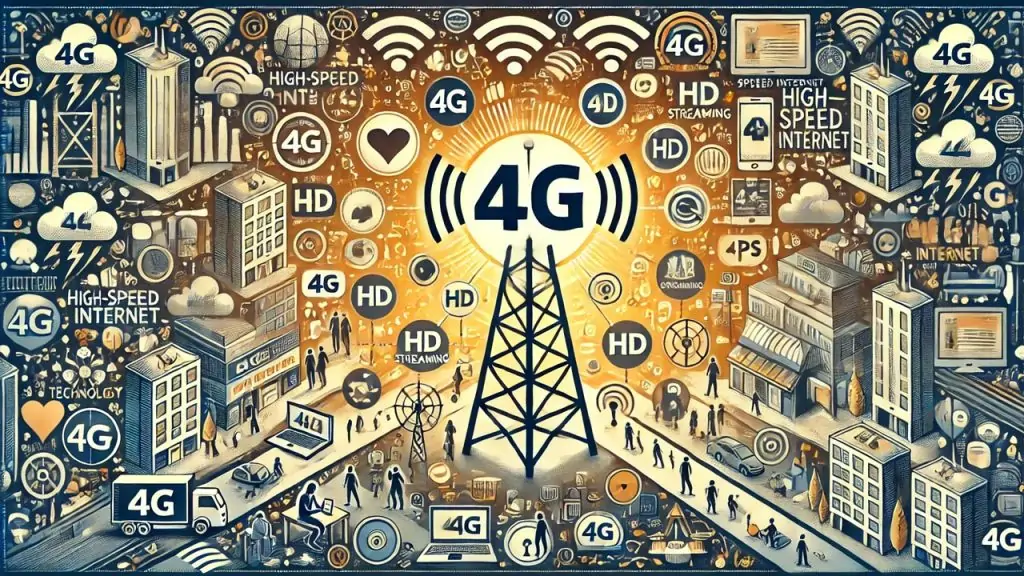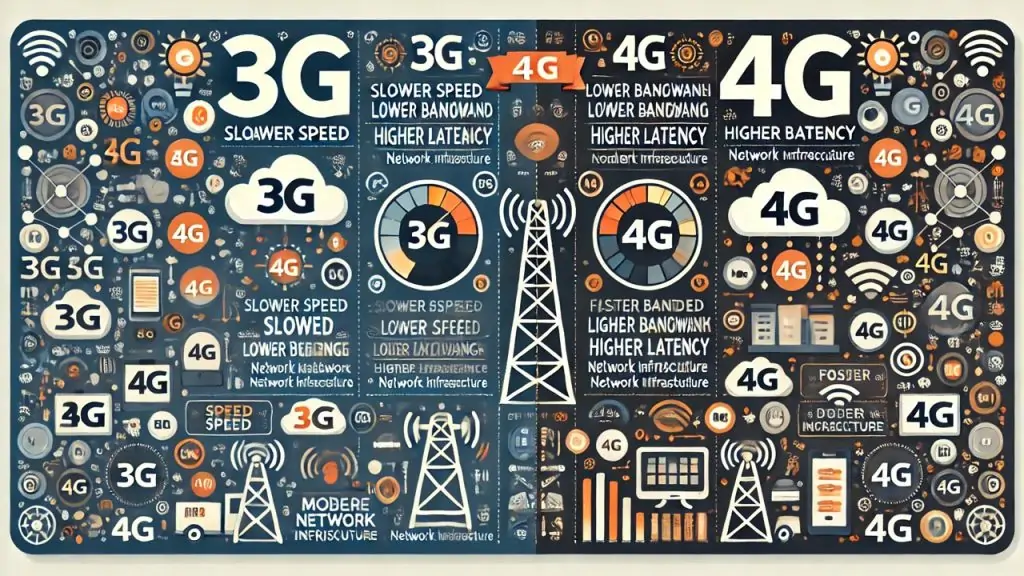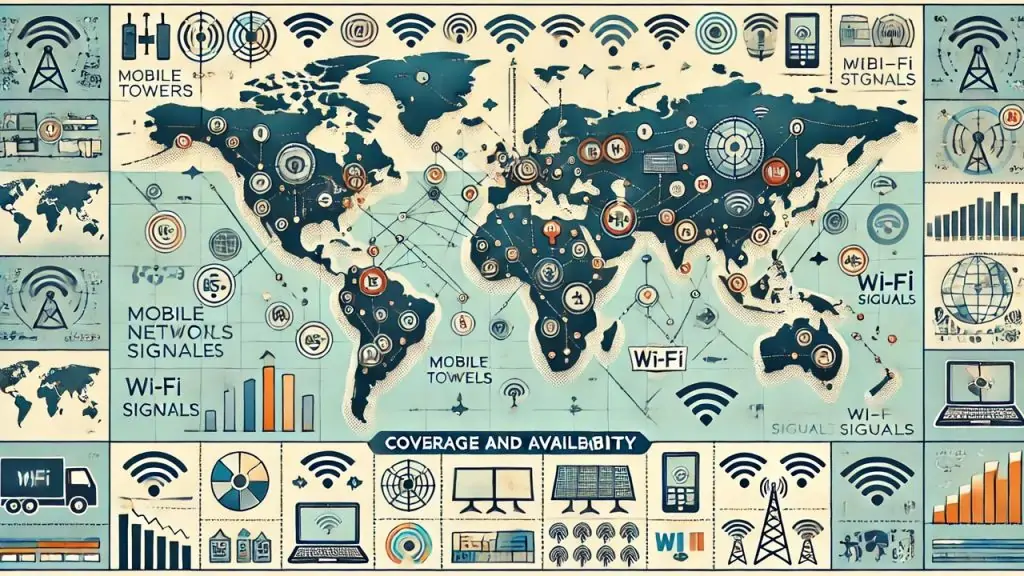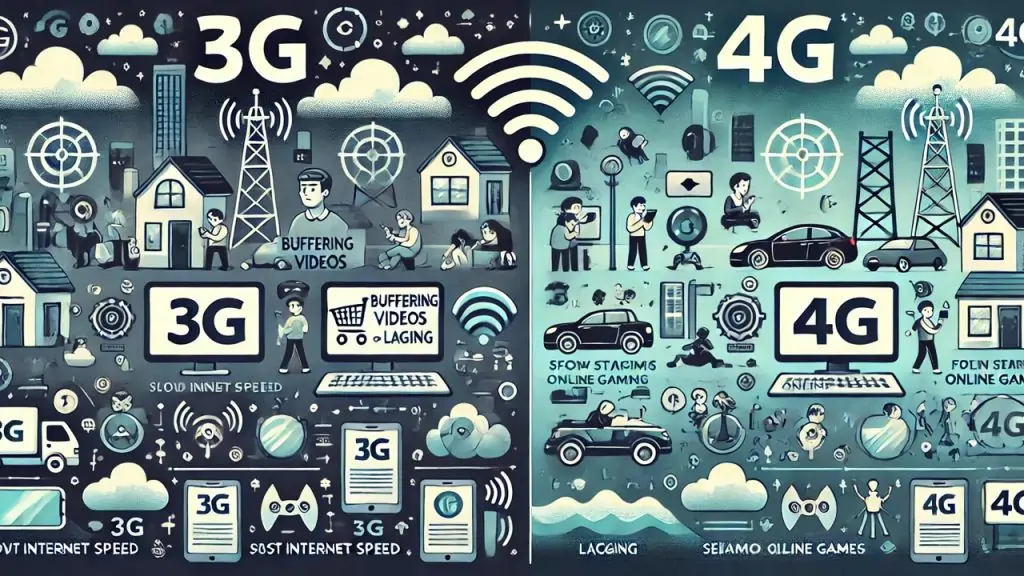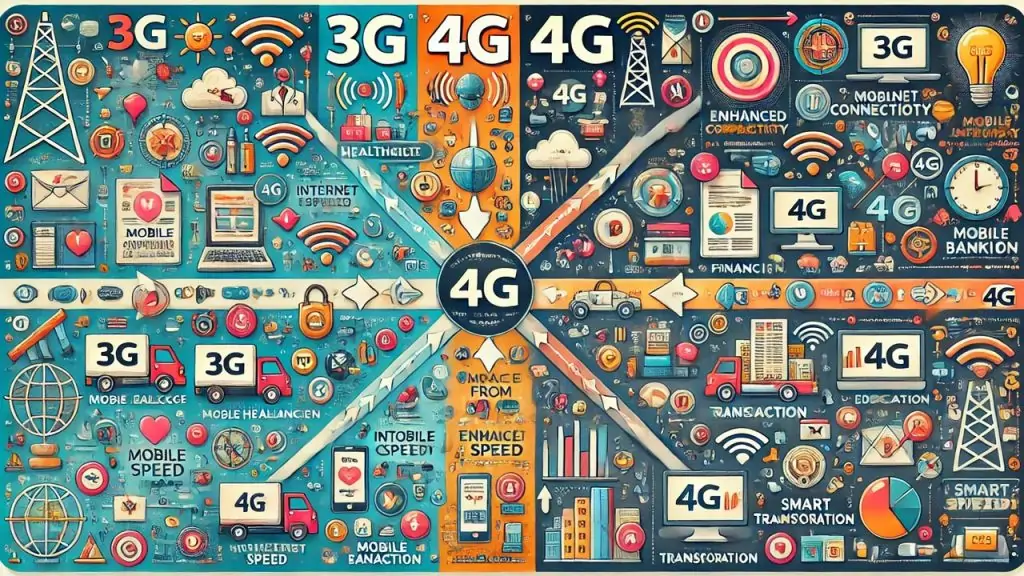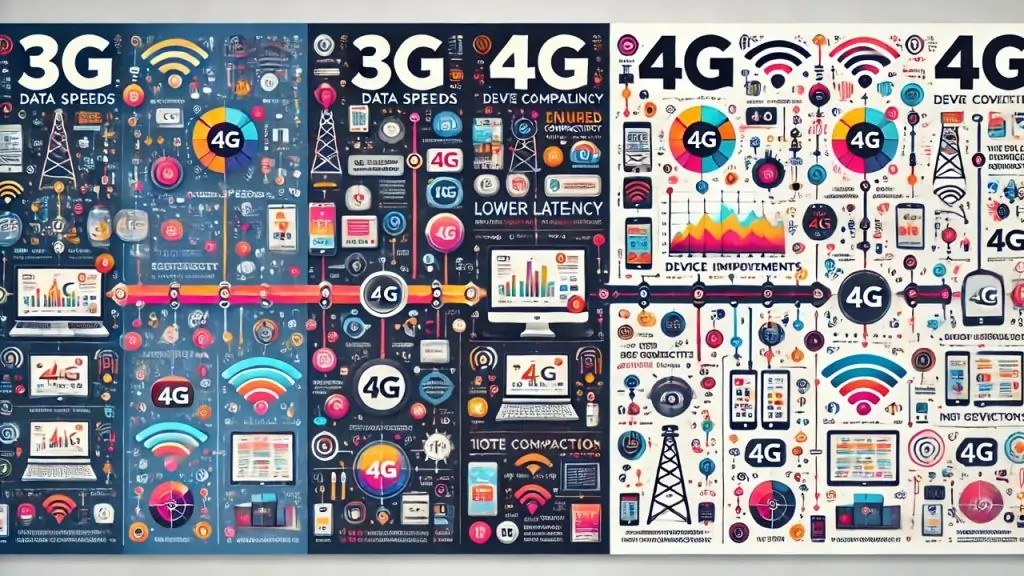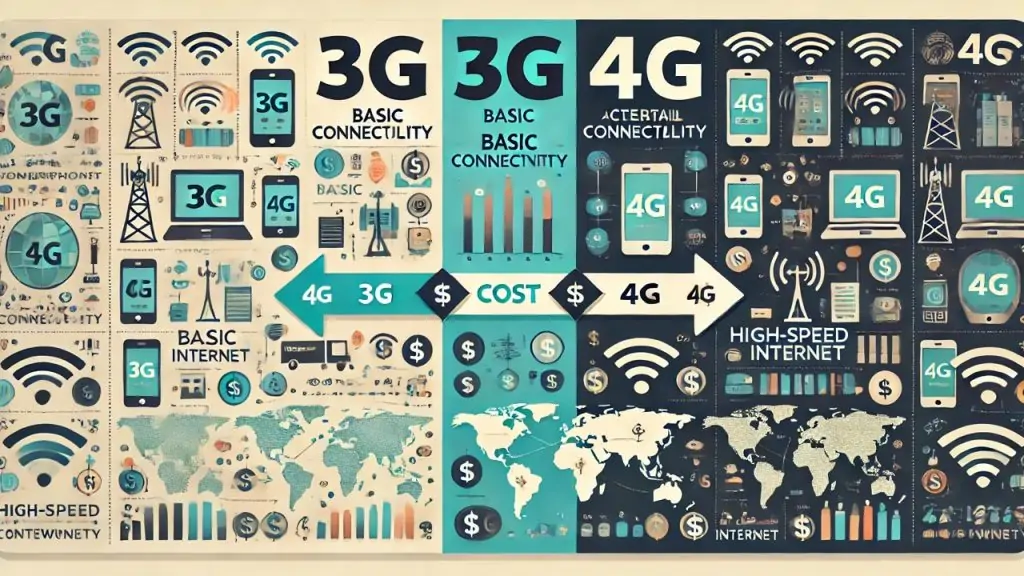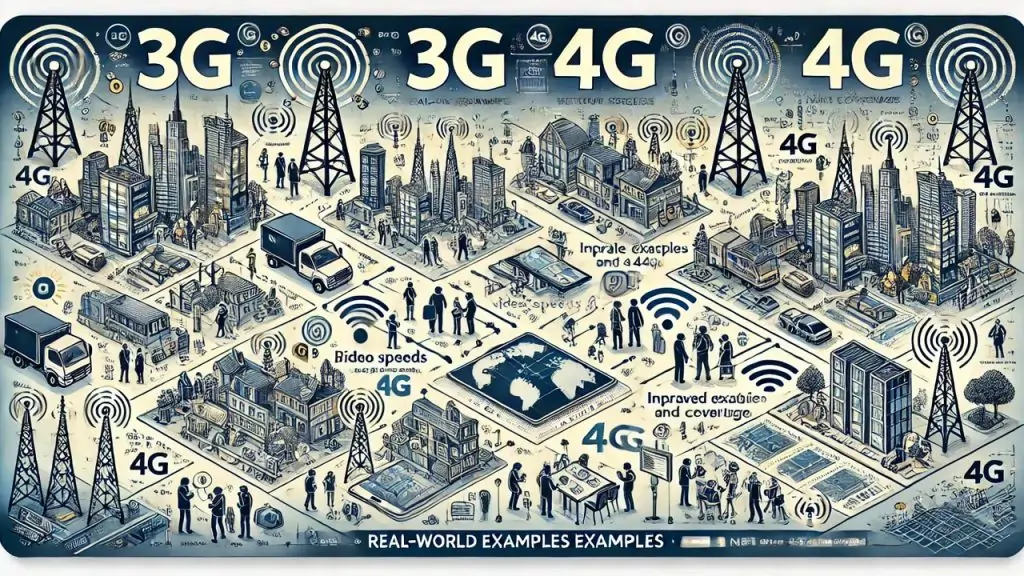The journey of mobile network technology has seen significant advancements over the decades, transforming the way we communicate, access information, and entertain ourselves. Understanding the differences between 3G vs 4G is crucial as it highlights technological progress and its impact on our daily lives.
Understanding 3G Technology
Definition and History: Third-generation (3G) technology marked a substantial leap from its predecessors, providing enhanced mobile internet capabilities. In the early 2000s, 3G enabled faster data transmission and better connectivity.
- Launched by the International Telecommunication Union (ITU).
- Standardized by the 3rd Generation Partnership Project (3GPP).
- Aimed to provide mobile broadband access and improve spectrum efficiency.
Key Features and Capabilities: 3G brought integrated voice and data services, supporting web browsing, email, and video calling with improved reliability. It facilitated speeds up to 2 Mbps, revolutionizing mobile internet usage.
- Supports simultaneous voice and data transmission.
- Introduced UMTS (Universal Mobile Telecommunications System) and CDMA2000 standards.
- Enabled global roaming for mobile users.
Common Use Cases: 3G found widespread applications in mobile browsing, social media, video calls, and early mobile apps, setting the stage for more advanced technologies.
- Mobile web browsing and email.
- Social media access on the go.
- Early video calling services like Skype.
Understanding 4G Technology
Definition and History: Fourth-generation (4G) technology emerged in the late 2000s, promising a significant upgrade in speed and performance. 4G networks aimed to provide a seamless internet experience comparable to home broadband.
- Developed to meet the requirements of IMT-Advanced standards.
- LTE (Long-Term Evolution) became the most widely adopted 4G standard.
- First launched in Stockholm and Oslo in 2009.
Key Features and Advancements: With speeds up to 100 Mbps, 4G offers enhanced network capacity, efficiency, and lower latency. It supported high-definition streaming, online gaming, and robust mobile applications.
- Utilizes OFDMA (Orthogonal Frequency Division Multiple Access) for better efficiency.
- Reduced latency significantly, improving real-time applications.
- Enhanced support for high-speed data services.
Common Use Cases: 4G facilitated high-quality video streaming, real-time gaming, and advanced mobile applications, making it essential for modern digital lifestyles.
- HD video streaming on platforms like Netflix and YouTube.
- Real-time multiplayer gaming.
- Advanced mobile apps and services.
Key Differences Between 3G and 4G
Speed Comparison: 4G is significantly faster than 3G, offering up to 50 times higher speeds. For instance, downloading a movie on 3G might take hours, whereas 4G accomplishes it in minutes.
- 3G speeds: up to 2 Mbps.
- 4G speeds: up to 100 Mbps (theoretical) and 20-50 Mbps (real-world).
- For example, downloading a 1 GB file takes 7-8 minutes on 3G but only 1-2 minutes on 4G.
Network Capacity and Efficiency: 4G networks handle more users and devices efficiently, providing stable connectivity even in crowded areas. This advancement supports the growing demand for mobile internet.
- 4G can support up to 10 times more devices than 3G.
- Better spectrum utilization.
- Improved signal quality and coverage.
Latency and Response Times: 4G offers lower latency, enhancing real-time applications like video calls and online gaming, which are crucial for a seamless user experience.
- 3G latency: around 100-500 ms.
- 4G latency: around 30-50 ms.
- Impact on applications: smoother video calls and faster gaming response times.
Coverage and Availability: While 3G initially had broad coverage, 4G networks have expanded rapidly, especially in urban areas, providing extensive global coverage.
- 3G coverage: initially widespread, now declining.
- 4G coverage: rapidly expanding, especially in cities.
- Urban vs. Rural: 4G is more prevalent in urban areas; rural areas are catching up.
Coverage and Availability
Global Coverage of 3G: Initially, 3G networks dominated globally, offering widespread coverage. However, their expansion has slowed with the advent of 4G.
- 3G networks are still prevalent in many developing countries.
- Gradual phase-out in favour of 4G and upcoming 5G networks.
- Key regions: Africa, parts of Asia, and rural areas globally.
Expansion of 4G Networks: 4G networks have seen exponential growth, especially in urban areas, providing high-speed internet access to a vast population.
- Rapid rollout in developed countries.
- Expanding coverage in developing nations.
- Increasing focus on bridging the urban-rural digital divide.
Urban vs. Rural Coverage: While urban areas benefit from extensive 4G coverage, rural regions are gradually catching up, ensuring broader access to high-speed internet.
- Urban: almost complete 4G coverage in cities and towns.
- Rural: ongoing efforts to expand 4G coverage.
- Government and private sector initiatives to improve rural connectivity.
Impact on User Experience
Browsing and Streaming: 4G significantly enhances browsing speeds and streaming quality, supporting HD video and high-fidelity audio streaming without buffering.
- Browsing: faster loading times, smoother experience.
- Streaming: high-definition video, minimal buffering.
- Enhanced audio streaming quality.
Mobile Applications: Apps perform better on 4G, offering faster loading times and smoother user experiences. Emerging technologies like augmented reality thrive on 4G networks.
- Faster app downloads and updates.
- Smoother in-app performance.
- Support for advanced technologies (AR, VR).
Voice and Video Calls: 4G improves the quality and reliability of voice and video calls, providing clearer and uninterrupted communication.
- HD voice calls with VoLTE.
- High-quality video calls.
- Improved call connectivity and fewer dropped calls.
Impact on Industries
Telecommunications: 4G has revolutionized the telecom industry, enabling advanced services like VoLTE (Voice over LTE) and paving the way for 5G.
- Improved service quality and new offerings.
- Transition to all-IP networks.
- Foundation for future 5G networks.
Media and Entertainment: The entertainment industry has benefited immensely, with seamless video streaming, online gaming, and instant content delivery becoming standard.
- Growth of streaming services.
- Rise of mobile gaming.
- Enhanced user engagement and interaction.
E-commerce and Mobile Banking: 4G enhances online transactions, offering faster, more secure, and more reliable mobile banking and e-commerce experiences.
- Improved transaction speeds and security.
- Seamless mobile shopping experiences.
- Increased adoption of mobile payment solutions.
Healthcare and Education: Telehealth and online education have significantly improved, with faster connectivity supporting remote consultations and e-learning platforms.
- Growth of telemedicine services.
- Enhanced online learning experiences.
- Greater access to remote healthcare and education.
Device Compatibility and Advancements
3G-Compatible Devices: Early smartphones, basic feature phones, and some tablets supported 3G, providing essential mobile internet access.
- Examples: early iPhone models and Nokia feature phones.
- Basic internet browsing and email capabilities.
- Limited app functionality.
4G-Compatible Devices: Modern smartphones, tablets, and IoT devices are 4G-compatible, offering enhanced performance and connectivity.
- Examples: smartphones from Samsung, Apple, and Huawei.
- Support for advanced applications and high-speed internet.
- Growing adoption of IoT devices (smart homes, wearables).
Cost and Accessibility
Cost of 3G Services: Initially, 3G services were costly but became more affordable over time. However, the speed and performance limitations remained.
- Early high costs of data plans.
- A gradual reduction in prices.
- Limited performance compared to 4G.
Cost of 4G Services: 4G services are competitively priced, with various plans catering to different user needs, offering better value for enhanced performance.
- Competitive pricing for data plans.
- Wide range of service options.
- Better value for faster speeds and improved performance.
Accessibility: 4G services are accessible to a wide demographic, ensuring that more people can benefit from high-speed internet.
- Broader demographic reach.
- Increased accessibility in developing regions.
- Efforts to bridge the digital divide.
Real-World Examples and Case Studies
User Testimonials: Many users have shared positive experiences with 4G, citing faster speeds and better connectivity than 3G.
- Improved user satisfaction.
- Enhanced mobile internet experiences.
- Real-world feedback on performance differences.
Industry-Specific Case Studies: Telemedicine has flourished with 4G, enabling remote diagnostics and consultations and improving patient care.
- Telehealth: remote patient monitoring, virtual consultations.
- E-commerce: seamless mobile shopping experiences.
- Education: enhanced online learning platforms.
Conclusion
The transition from 3G to 4G marks a significant evolution in mobile network technology, enhancing our digital experiences and driving innovation. Staying updated on future advancements, like 5G, will ensure we continue to leverage mobile technology’s full potential. Understanding the differences between these technologies not only helps in making informed choices but also prepares us for the future of connectivity.
